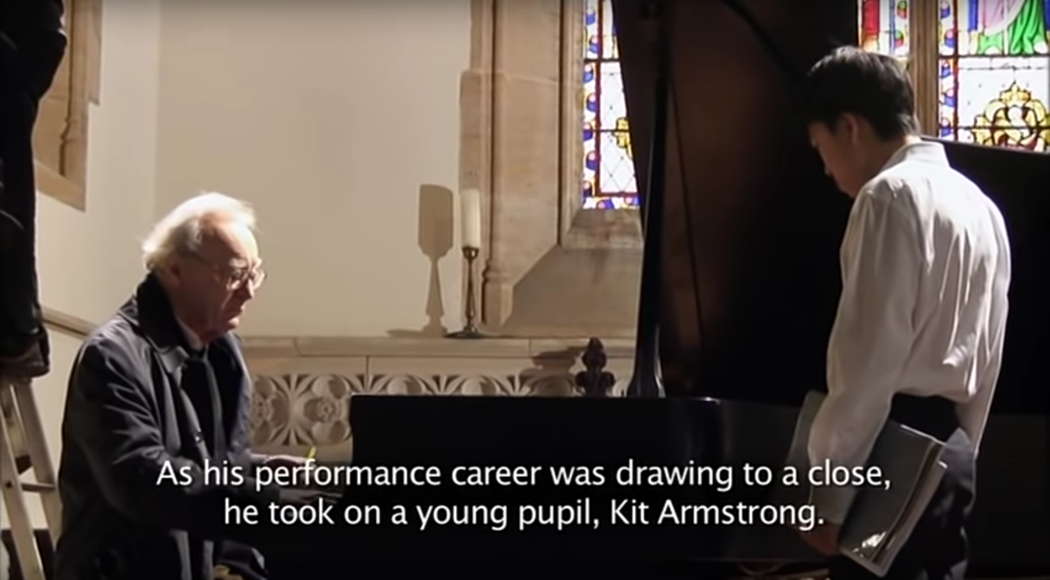- St Petersburg
- Emma Lou Diemer
- harpsichord music
- Harry Christophers
- Maurice Duruflé
- Jocelyn Morlock
- Andrew Ford
- Shlomo Mintz
 MET STARS: From 2002 until 2021 the late Maria Nockin reported from Arizona, mostly on live opera productions.
MET STARS: From 2002 until 2021 the late Maria Nockin reported from Arizona, mostly on live opera productions.
 DISCUSSION: John Dante Prevedini leads a discussion about Composers, individuals or collective?, including contributions from David Arditti, Halida Dinova, Robert McCarney and Jane Stanley.
DISCUSSION: John Dante Prevedini leads a discussion about Composers, individuals or collective?, including contributions from David Arditti, Halida Dinova, Robert McCarney and Jane Stanley.
A QUIET LOGIC

CHANG SUN writes about the American pianist Kit Armstrong
Twenty-eight-year-old pianist Kit Armstrong has been releasing short explanatory piano videos on his YouTube channel for some time. A prodigy throughout, Armstrong was filmed in a documentary with his teacher, the famous Alfred Brendel, in 2011 called Set the Piano Stool on Fire. The documentary opened with Armstrong playing J S Bach's Toccata in G major, BWV 916, and Brendel explaining that he took on Armstrong as pupil because he was just 'so extraordinary'.

A still frame from Mark Kidel's 2011 film Set the Piano Stool on Fire featuring Alfred Brendel and Kit Armstrong
Armstrong has a quiet and elegant performance style, especially upon comparison with pianist and musicologist Robert Levin, who played BWV 916 in an interview, sticking his elbows in all directions and raising his free hand into the sky while playing. It is not to say that Armstrong's performance is necessarily better than Robert Levin or vice versa, but Armstrong's Bach is indeed characterized by a quiet logic and a certain clarity and fluidity that drive the music forward.
It is also amazing how extremely intelligent is this pianist: his mother recounted in the documentary that when Armstrong was sent to a piano school near home, the teacher told her that her son 'doesn't belong here', and how Armstrong simply taught himself composition by reading an encyclopedia at the age of five.
Armstrong has released two albums so far. The first one is made up of his interpretations of some of Bach's chorale preludes, Bach's Partita No 1 and his own Fantasy on Bach. Armstrong's ability to enable each of the voices of the preludes to sing out clearly results in a certain magnificence that just surrounds the listeners with multiple layers of sonic experience, and his Partita is endowed with a delicacy, even fragility, coupled with pensiveness. His own composition in this album touches more on contemporary atonal sound than on Bach's baroque style, and his Ligeti is played very persuasively, with careful phrasing and a logical narrative quality.

Kit Armstrong's solo piano CD Bach, Ligeti, Armstrong was released by Sony Music Entertainment in September 2013
The second album is one in which Armstrong played several of Liszt's symphonic scenery pieces. Armstrong succeeded in managing to avoid the heaviness and muddiness of so many other pianists when encountering Liszt. Instead, his style is embellished with an ephemeral lightness, and his playing does not lack a solemn balance when needed.

Kit Armstrong's solo piano CD Liszt: Symphonic Scenes was released by Sony Music Entertainment in November 2015
I believe it will be very rewarding to see Armstrong's future development as a pianist and composer, even though our era seems have become more doting on commercialized musicians.
Ireland

FURTHER INFORMATION: KIT ARMSTRONG

